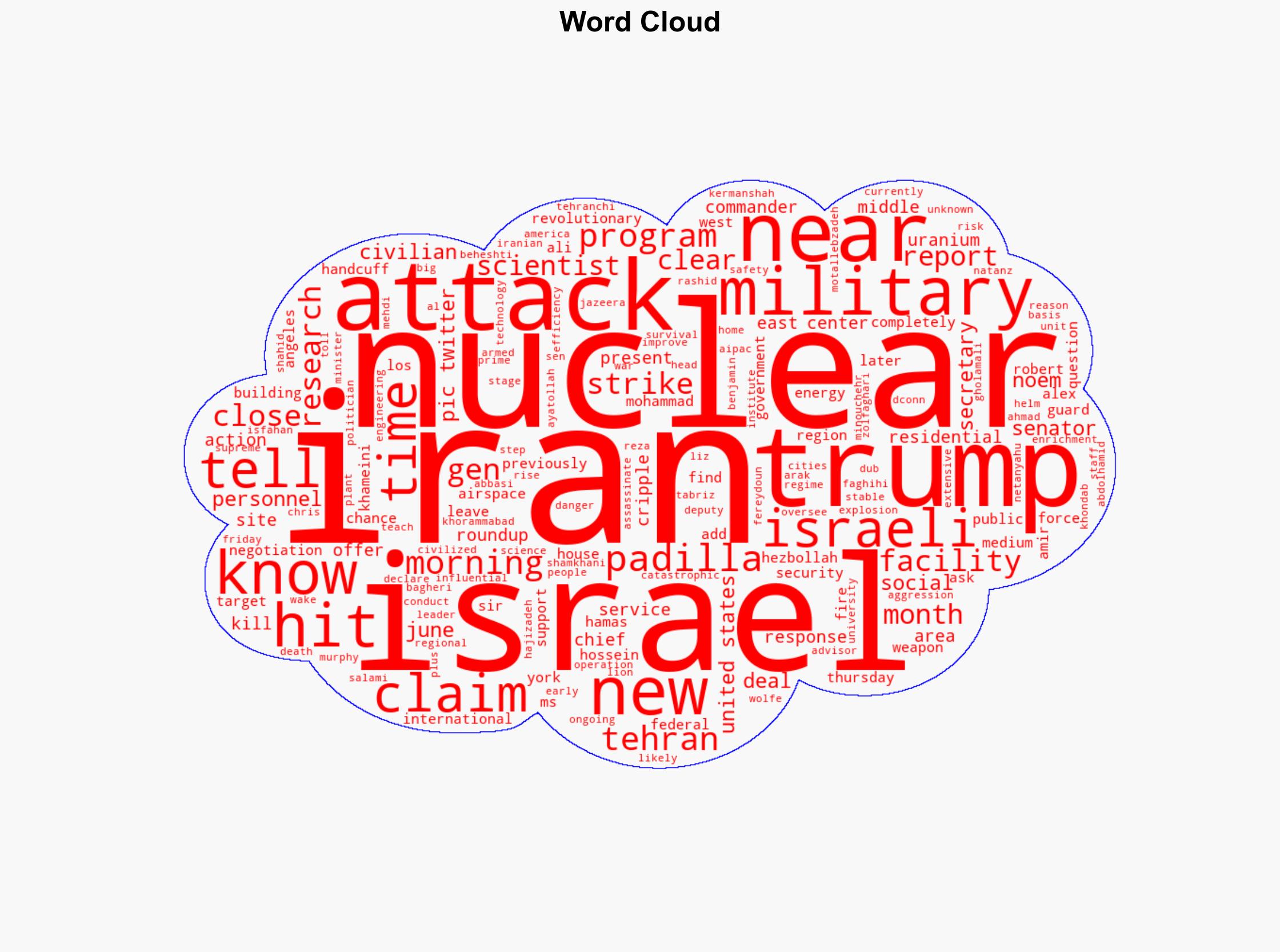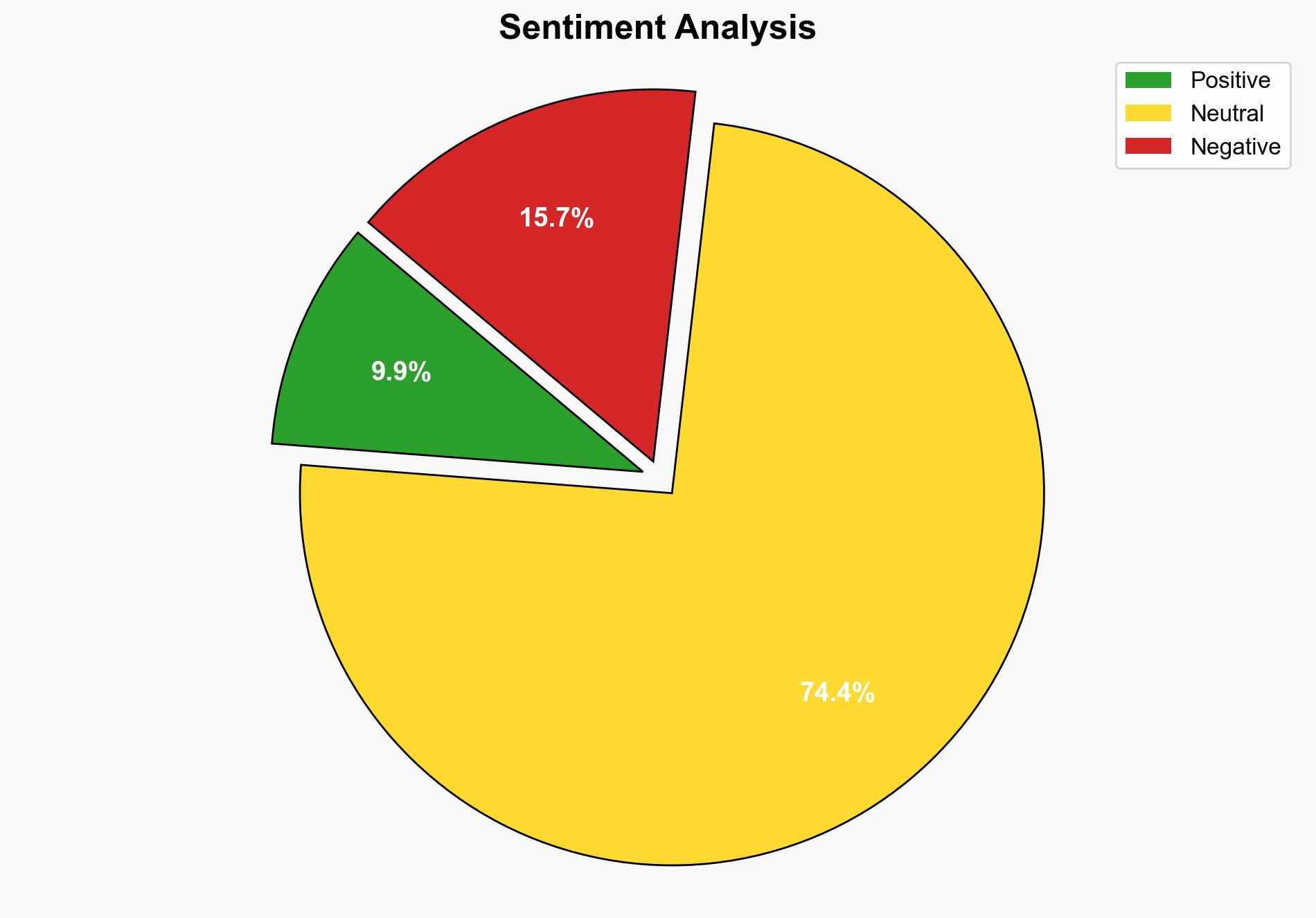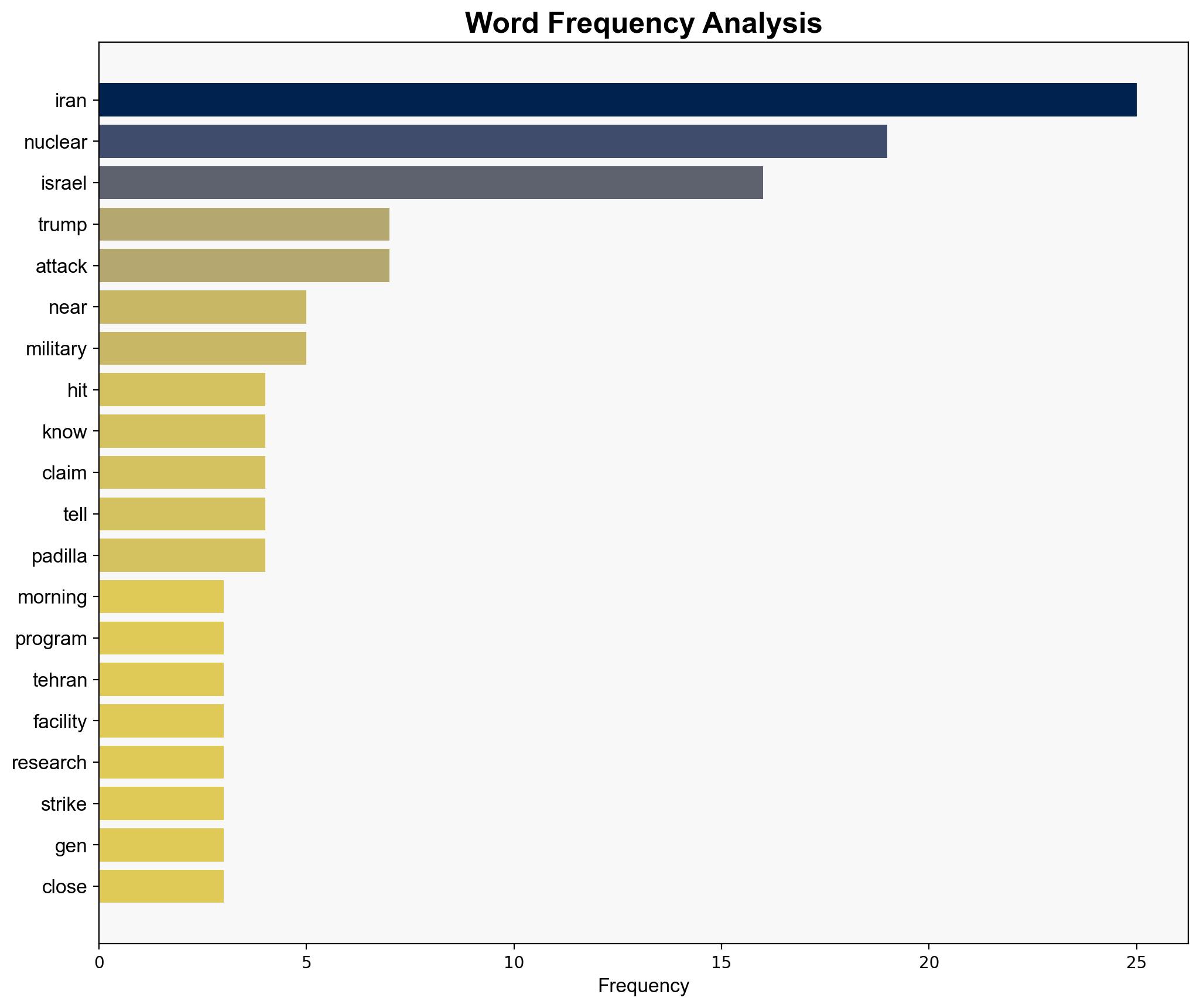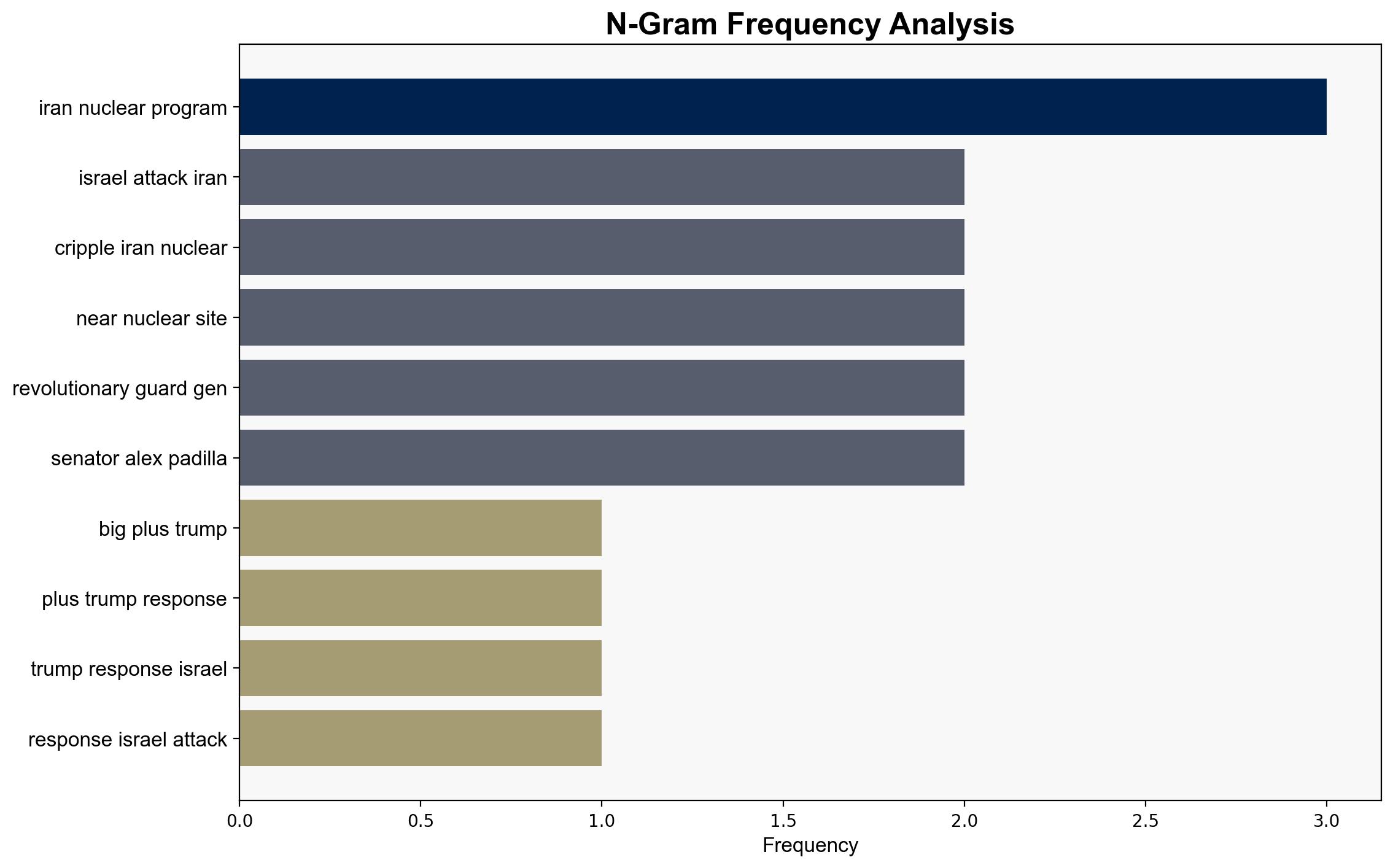The Big One – Reason
Published on: 2025-06-13
Intelligence Report: The Big One – Reason
1. BLUF (Bottom Line Up Front)
The recent Israeli strikes on Iranian nuclear facilities and military sites represent a significant escalation in regional tensions. The strategic objective appears to be the crippling of Iran’s nuclear capabilities, which Israel perceives as a direct threat. This action could trigger a broader conflict involving Iran’s regional allies, increasing the risk of a large-scale war in the Middle East. Immediate diplomatic engagement is recommended to de-escalate tensions and prevent further military actions.
2. Detailed Analysis
The following structured analytic techniques have been applied to ensure methodological consistency:
ACH 2.0
The Israeli strikes are likely intended to preemptively neutralize perceived threats from Iran’s nuclear program. This hypothesis is supported by Israel’s historical stance and recent rhetoric emphasizing the existential threat posed by a nuclear-armed Iran.
Indicators Development
Monitoring of digital communications and travel patterns suggests heightened alertness among Iranian proxies, indicating potential retaliatory actions. Increased propaganda efforts have been observed, aiming to galvanize support against perceived aggressors.
Narrative Pattern Analysis
The narrative of resistance against foreign aggression is being amplified across Iranian and allied channels, potentially serving as a recruitment tool and justification for retaliatory measures.
3. Implications and Strategic Risks
The strikes could destabilize the region, leading to increased military engagements involving Iran’s allies such as Hezbollah and Hamas. Economically, disruptions in oil supply routes could occur, impacting global markets. Cyber retaliation by Iran against Israeli and allied infrastructure is a plausible risk, necessitating heightened cybersecurity measures.
4. Recommendations and Outlook
- Engage in diplomatic efforts with regional and international stakeholders to de-escalate tensions and prevent further military actions.
- Enhance cybersecurity defenses to protect against potential Iranian cyberattacks.
- Scenario-based projections:
- Best Case: Successful diplomatic intervention leads to a new nuclear agreement, reducing regional tensions.
- Worst Case: Escalation into a full-scale regional conflict involving multiple state and non-state actors.
- Most Likely: Continued low-intensity conflict with sporadic military engagements and cyber skirmishes.
5. Key Individuals and Entities
Hossein Salami, Gholamali Rashid, Mohammad Bagheri, Amir Ali Hajizadeh, Ali Shamkhani, Mohammad Mehdi Tehranchi, Fereydoun Abbasi, Abdolhamid Minouchehr, Ahmad Reza Zolfaghari, Amir Hossein Faghihi, Motallebzadeh.
6. Thematic Tags
national security threats, cybersecurity, counter-terrorism, regional focus





